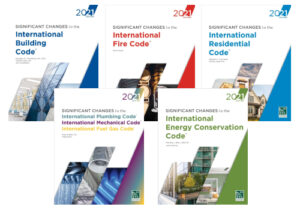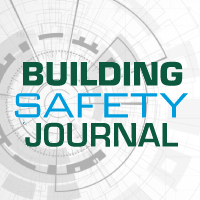
Significant changes to drain, waste and vent systems testing in the 2021 International Residential Code
A modification to Section P2503.5.1 (Drain, Waste and Vent Systems Testing) of the 2021 International Residential Code (IRC) states that the head pressure for a water test of drain, waste and vent (DWV) systems has increased from 5 feet to 10 feet. Air vacuum testing is now permitted for plastic piping DWV systems.
Prior to the 2015 edition, the IRC required a 10-foot head pressure for testing DWV systems with water. In the 2015 code, the head pressure was reduced to 5 feet. Although the 10-foot head pressure has been a long-standing tradition, the change in 2015 was based on an assumption that the actual head pressure is not nearly as critical as the visual nature of the test, and that a 10-foot head test was unlikely to reveal any leaks or defects that would not be detected by a 5-foot head water test.
In the 2021 IRC, the test pressure has been changed back to 10 feet. Reasons for changing back included inconsistency with the required air pressure (when testing with air), which was not decreased in the 2015 IRC. The 5-foot height also does not match the 10-foot height required in the International Plumbing Code.
In this water test, the DWV systems are filled with water to a point 10 feet higher than the piping being tested and the piping and joints are visually inspected for any leaks that might develop. The duration of the water test is 15 minutes to ensure that the system is water-tight. The top 10 feet of the DWV systems, which is typically the highest vent through the roof, is only filled with water to the top of the vent terminal. Adding an additional 10-foot standpipe above the vent terminal would not be easily accomplished and would not provide any benefit because the vent will not carry water and not be under pressure in service.
New to the 2021 IRC, a vacuum air test is permitted for testing plastic DWV systems. This alternate test is a means for testing plastic piping systems when the ambient temperatures are below freezing and testing with water presents a challenge. There is no safety hazard in testing with a vacuum such as has occurred in the past with a positive air pressure test on plastic piping. The equipment to perform the test is readily available on the market and a number of contractors are performing the test. Vacuum air testing provides an additional option for testing of plastic piping systems.
Read the full significant change.
 The 2021 Significant Changes guides are available for the International Building, Fire, Residential, Energy Conservation, Plumbing, Mechanical and Fuel Gas Codes. This valuable series can help any code user save time by zeroing in on the most critical changes in the 2021 International Codes. The Code Council’s technical experts provide summaries, analysis and graphics for these changes making them clear and easy to understand. Each edition provides a comprehensive analysis of significant changes since the 2018 edition, offering key insights into its contents and implications. Each change analysis features the affected code sections and identifies the change with strikethroughs and underlines to show modifications to the existing language. Each change is accompanied by a quick summary, detailed illustrations, and a discussion of its significance, which brings the technical jargon of the code to life in a real-world setting.
The 2021 Significant Changes guides are available for the International Building, Fire, Residential, Energy Conservation, Plumbing, Mechanical and Fuel Gas Codes. This valuable series can help any code user save time by zeroing in on the most critical changes in the 2021 International Codes. The Code Council’s technical experts provide summaries, analysis and graphics for these changes making them clear and easy to understand. Each edition provides a comprehensive analysis of significant changes since the 2018 edition, offering key insights into its contents and implications. Each change analysis features the affected code sections and identifies the change with strikethroughs and underlines to show modifications to the existing language. Each change is accompanied by a quick summary, detailed illustrations, and a discussion of its significance, which brings the technical jargon of the code to life in a real-world setting.
Significant Changes to the International Residential Code, 2021 Edition, is available in the ICC Store or through Digital Codes Premium.








